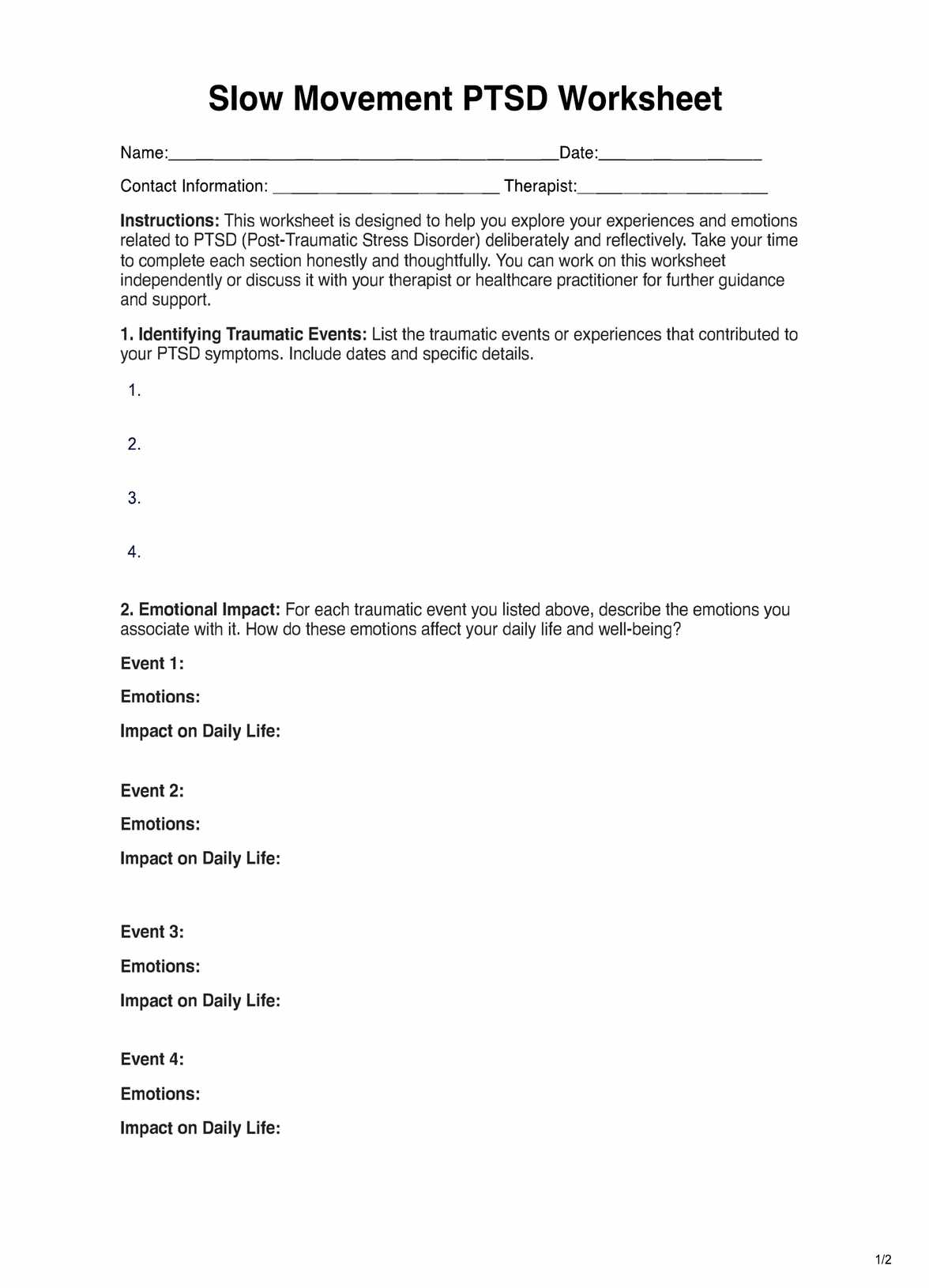Yes, it is. Individuals dealing with PTSD can use it for personal reflection and understanding. Mental health professionals, support group leaders, or therapists can incorporate it into their therapy sessions or support group meetings to aid clients in their recovery journey.

Slow Movement PTSD Worksheet
Improve mental health with Slow Movement PTSD Worksheet—a therapeutic tool for healing. Find peace and resilience.
Slow Movement PTSD Worksheet Template
Commonly asked questions
You can access the Slow Movement PTSD Worksheet in PDF format through various online resources and mental health websites or by obtaining it from a therapist or support group facilitator who may use it as part of their therapy sessions.
The worksheet offers several benefits, including enhanced self-awareness, structured self-reflection, goal setting for healing, improved communication in therapy sessions, fostering a sense of community in support groups, and promoting holistic self-care.
EHR and practice management software
Get started for free
*No credit card required
Free
$0/usd
Unlimited clients
Telehealth
1GB of storage
Client portal text
Automated billing and online payments











